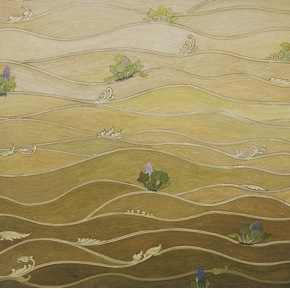![]()
Dear Interested Reader, Esteemed Guest, or Casual Browser,
This is Kbach Untitled, a project that has been outfitted with the purpose of examining the memorialization of the Cambodian genocide. From September 2012 to July 2013, I am scurrying throughout Cambodia to take a look at Cambodian sites of memory, specifically genocide memorials. The project is funded by a Fulbright U.S. Student Program grant and this site serves as an archive for research findings and a journal for personal experiences.
Pleased to have you,
Tara
When I read the captions of artwork in museums and galleries, I grit my teeth at titles that artists choose like, “Untitled,” “Untitled No. 1,” “Untitled No. 53,” etc. As a person who takes a inordinate amount of pleasure in naming all things, from the inanimate to the animate, I can’t help but feel both curious and annoyed with untitled artwork. Curious Tara says, “What was the artist trying to do here? What is my personal interpretation of this piece?” Annoyed Tara says, “This artist was just plain lazy. Listen you artist, when I make the exhausting effort to squint with my face at the wall, I want to read something worthwhile.” (I’m not defending the latter reaction as a reasonable one.)
There’s a reason for my preoccupation with naming. It’s my way of forming an attachment. My family members have a name. I am committed to loving them. My potted succulent has a name. I am committed to watering it. Now I’ve gone ahead and named this project, Kbach Untitled. (Note – First, this name is an example of me learning to embrace the whole “Untitled” concept, so I am not a hypocrite. And second, no, “Kbach” is not the name of some Cambodian rap group, at least to my limited knowledge.)
During the summer of 2012 leading up to my departure to Cambodia, the need to name the work I would be doing for 10 months nagged me. Well, the idea for the project originally spun off of a paper I wrote at the end of my undergraduate studies in history at Westmont College. The thesis, entitled “The Art of Memory: Visions of Restoration in Khmer Art and Visual Culture since the Cambodian Genocide, 1975-1979,” looked at a museum, monument, and works of modern and contemporary Khmer art as visual forms of memory that first, portrayed a politicized view of the past, and second, suggested a vision of Khmer society that would reform what was corrupted during the genocide. I thought of just continuing the paper and going the “continuing story” route for this Fulbright project. Then I remembered the last two paintings I wrote about in the thesis. They were my favorites – a diptych by Khmer veteran painter Duong Saree, entitled Kbach Tonle Sap (2009). In each painting, Saree shows us Tonle Sap, the largest lake in Cambodia, during different seasons of the water’s current. She also employs the use of kbach, a Cambodian form of decorative art characterized by internally dividing a basic outline with repeating shapes and motifs to produce a form of complex ornamentation. (By the way, it’s pronounced “khuh-bahk,” emphasis on the second syllable.) Kbach is prolific in traditional Cambodian art and architecture, carved onto the stones at Angkor, etched around a silver chalice, or spun through a bright sheath of silk.

Kbach Tonle Sap 2 (2009), Duong Saree, Watercolor on paper, 50 cm. x 50 cm.
I found the intertwining intricacies of kbach strikingly lovely; the craftsmanship involved is quite stunning. Within the context of my thesis, I also found kbach to be philosophically evocative of the relationship between history and memory, particularly in the water scenes of Kbach Tonle Sap. Visualize: people tell their stories, these memories stream into one another, some currents splash in conflict and others stream in union, and always, there is continuous movement. In his book Memory, History, Forgetting (2000), French philosopher Paul Ricoeur illustrates history and memory with water imagery:
On the one hand, memories are divided and organized into levels of meaning, into archipelagos, sometimes separated by gulfs; on the other, memory remains that capacity to traverse, to move back through time, without anything, in principle, preventing the pursuit of this movement, without any end to its continuity.
Kbach is symbolic of history and memory. Though the curlicues of lotus buds and flowering vines are delicate in their basic shape, the larger finished kbach form is a bold statement. As is history and memory. The goal for this project is that it be a work of kbach itself, a vessel for images, oral histories, videos, documents, etc. – all historical sources that serve as the individual elements that make up a good history.
I tried to come up with a clever way of phrasing “Kbach,” but they just sounded like painful English transliterations for sappy documentaries. Thus, this project is named Kbach Untitled to indicate that, like memory itself, it is a work in progress. And I am perfectly content with that; neither anxious curiosity nor unsettling annoyance pesters me, and I have formed my attachment and acknowledged my commitment: I will move forward, drawing one basic shape at a time, collecting one story at a time, and patiently piece them together.
